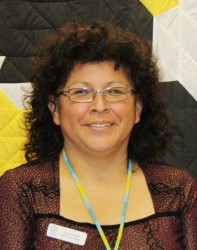Article Origin
Volume
Issue
Year
The HIV rate in Saskatchewan is twice the national average. In 2010, Aboriginal people accounted for 73 per cent (125 cases) of all newly diagnosed HIV cases. There were172 HIV cases reported.
Dr. Johnmark Opondo, deputy medical health officer for the Saskatoon region, said the social determinants of health greatly influence the high numbers of Aboriginal HIV cases plaguing the province. Factors such as inadequate housing, low-income, poor education, unemployment and no access to social support substantially impact the health of individuals and communities.
“It’s the poverty. It’s the long-term disengagement with health care. It’s the issue of drug use in the community,” said Opondo.
The legacy of residential schools is also a determining factor on how First Nations people interact with the healthcare system, he said.
“Trust has been a major issue in their lives,” Opondo said. “It makes people feel very suspicious of well-intended programs that are there to help them and they wait too late.”
Opondo said the government’s strategy is helping to provide better access to HIV prevention information and resources for Aboriginal people.
But, said Margaret Poitras, CEO of All Nations Hope AIDS Network located in Regina, the province needs to do more to reach the Aboriginal community. It is not enough that one of the pillars for the Saskatchewan Ministry of Health’s HIV strategy is community engagement and education if it doesn’t take culture into consideration.
Poitras said that incorporating traditional teachings and culture when dealing with HIV among the Aboriginal community is important and could help raise awareness of HIV in many First Nation communities and eventually help make the issue less taboo.
“Expanding services to help Aboriginal people on their level will make a difference,” said Poitras.
Furthermore, she said, the province needs to provide better access to HIV testing and information to Saskatchewan’s urban First Nations, especially among the large homeless population in the city-centres.
“That’s where the problem is, is in the city, it’s not on the reserve. There are a lot of at-risk people off-reserve,” she said.
Poitras said HIV information and resources should be readily accessible through all of Saskatchewan’s existing Aboriginal organizations and more work needs to be done to fight the disease of addiction.
“(The government) calls the groups of those affected ‘clusters,’ but to us it’s our family,” she said.
Poitras said the high number of new HIV cases in Saskatchewan is unacceptable. Overall, in the last 10-year period, statistics show there has been a steady increase in the annual number of HIV diagnoses from 26 cases in 2002 to a peak of 200 cases in 2009. The high rates of infection in Saskatchewan are mainly due to intravenous drug use.
“We live in a developed country, we shouldn’t have any babies born with HIV,” said Poitras. “We want to get to the root cause and help them heal. It’s not just an easy fix. There is no pill to fight HIV.”
- 3140 views

